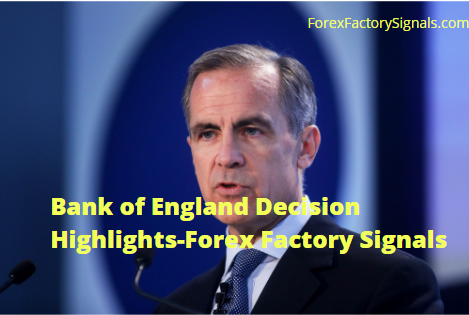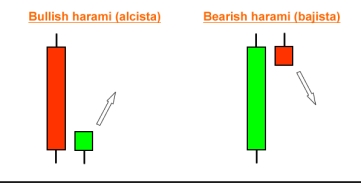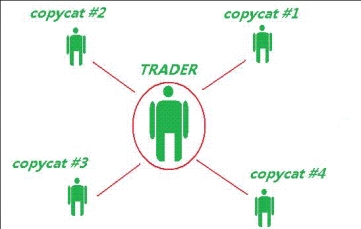How Central Banks Influence Forex Prices-Forex Factory Course

In the previous Lectures we took a look at a number of different factors that can affect forex prices one of those was interest rates so let’s quickly recap quite simply how interest rates can affect forex prices we looked last time at dollar-yen saying that interest rates in the US are significantly higher than interest rates in Japan and that interest rate differential can provide an incentive for yield-seeking investors to buy US Dollars and to fund the purchase of those dollars by selling yen and incidentally.
This is what is known in the forex market as a carry trade and we said that generally speaking if interest rates go up that would tend to provide a boost for a currency so if it was US interest rates that went higher that would boost the u.s. dollar if it was Japanese interest rates that went higher that would tend to boost the Japanese yen similarly generally speaking the interest rates go lower that tends to drag on our currency so once again if it was lower rates in the u.s. that would be dragging on the dollar if it was lower rates in Japan then that change in race would be a drag on the yen and of course it’s central banks that have a large influence over interest rates.
RELATED : WHAT IS PIPS & SPREAD IN FOREX TRADING?
So central bank’s hold sway to a large degree over the strength of the currencies that they’re in charge of so what we’re going to focus on in this lecture are the central banks for the major currency so that just goes back over what we mean by the major currencies so a quick reminder then of the seven major currencies the US dollar the USD the British Pound GBP the Euro you are the Japanese yen JPY the Swiss franc CHF the Canadian dollar CAD and the Australian dollar AUD.
Now there are quite a few commonalities between how the central banks for the major currencies approach monetary policy so let us now take a generalized look at some of these aspects of how they set monetary policy so for the major currencies.
We’ve said before that what they have in common is that they are currencies from large developed economies and so the central banks for these currencies do tend to have similar aims and ways of implementing monetary policy so generally speaking they tend to have price stability as a key aim and they will also often keep an eye on what I’ve called here the economic well-being of the country now some of the central bank’s will focus more on price stability or entirely on price stability.
Some others will look at economic well-being in terms of things like fostering maximum employment and when we say price stability basically what that means is trying to keep inflation at a steady rate that isn’t too high and isn’t too low so central banks and inflation are two things that our real interest to forex traders central banks will tend to have an inflation target and for a lot of the central bank’s we’re going to look at this is around about two percent generally that we’ll see how there may be some small variations.
When we get on to looking at individuals central banks because price stability is a key aim of the central bank’s a central bank will monitor inflation in its country or region and if the inflation rate becomes too high ie if it rises above targets then the central bank may feel that it’s necessary to raise its policy rate so here we have our central bank and the central bank is keeping an eye on what’s going on with prices now if they go too high if inflation persists above target and the central bank may respond by raising its policy rate this is going to have an effect on lenders they will be encouraged to raise their interest rates.
That will have an effect on borrowers who are going to feel a bit of a squeeze so the borrowers be less inclined to both borrow and spend so the action of the central bank here raising its policy rate has discouraged borrowing and discouraged spending and thereby eases price pressures so if you’re trading a certain currency one thing you really need to be aware of is when the central bank is going to be making an announcement regarding monetary policy so let’s run through now each of these central bank’s for the major currencies starting with the US so USA 2 starts we’ve said more than once before in this series of lectures.
That the US dollar is the most traded currency in the world all the major currency pairs involve the dollar and if you’re trading the US dollar is part of a currency pair you need to be aware of what is going on with the Federal Reserve which is the central bank for the US you need to know when the holding and FOMC meeting because that means they’re going to make a rate announcement now the FOMC is the Federal Open Market Committee and they meet eight times a year to decide on u.s. monetary policy now the Fed has a dual mandate one part of which is to promote maximum employment and the second part is to maintain stable prices to which end they have an inflation target currently of 2% and the measure of inflation that the Fed tends to look towards is what’s called the PCE price index the personal Consumer Expenditure price index now the FOMC meetings our 2-day meetings they usually begin on a Tuesday and end on a Wednesday and they’re usually held in January March May June July September late October or early November and December.
RELATED: HOW TO TRADE FOREX CURRENCY PAIRS?
The announcement is usually made on the Wednesday at 2 p.m. Eastern Standard Time that’s usually 7 p.m. UK time and four times a year they make these quarterly projections in the March June September and December meetings and a key person is Jerome Powell who is the current Fed Chairman you might want to keep an ear to the ground for any public statements he makes because he’s the most important voice in the FOMC and for the UK if you’re trading and FX pair involving the pound you’ll want to pay attention to the Bank of England the UK’s central bank and when the Bank of England is holding its monetary policy committee meetings like the Fed they hold their policy meetings eight times a year the MPC meetings of roughly every six weeks and they’re on a Thursday and the announcement is made at midday UK time monetary policy is set by the Bank of England in order to pursue a 2% inflation target that isn’t set by the Bank of England that target is set by the UK government and a key person at the Bank of England is the governor Mark Carney the former head honcho of the Bank of Canada and now for the euro area the euro is second only to the US dollar in terms of trading volumes and if you’re trading the euro as part of a Forex pay you will want to pay attention to what’s going on with monetary policy decided by the ECB the European Central Bank and the Governing Council of the ECB holds monetary policy meetings a similar schedule to the Bank of England that’s roughly every six weeks eight times a year they hold them on a Thursday the primary objective of the ECB’s monetary policy is to maintain price stability they aim for inflation that is below but to 2% over the medium-term and their inflation measure is the HIC P the harmonized index of consumer prices in other words an index of consumer prices that has been adjusted or harmonized across all the EU Member States they published their policy decisions at 1:45 p.m. central Eastern Time followed by a press conference 45 minutes later with ECB president mario draghi where he explains the policy decision and takes questions from journalists for japan and the yen the central bank is the Bank of Japan and the policy Board of the Bank of Japan means eight times per year and the bank introduced a price stability targets of 2% in year-over-year change in the Japanese CPI back in 2013 but in 2016 it introduced.
What it calls an inflation overshooting commitment where it continues to expand the monetary base until CPI excluding fresh food exceeds 2% and stays above the target in a stable manner the governor of the Bank of Japan is Haruhiko Kuroda and for Switzerland and the Swiss franc the central bank is the Swiss National Bank and their Governing Board meets only quarterly to decide on monetary policy their target is for Swiss CPI of less than 2% and key person at the Swiss National Bank is the chairman of the governing board which is thomas jordan and the final two we’re going to look at for Canada and the Canadian dollar the central bank is the Bank of Canada and the bank’s Governing Council makes interest rate announcements eight times per year usually on a Wednesday at 10 a.m. Eastern Standard Time missus its policy rate to try and achieve an inflation target of 2% that’s the midpoint of a 1 to 3% target range that targets is jointly set by the Bank of Canada and the Canadian federal government and is reviewed every five years and the governor of the Bank of Canada is Stephen poloz and then for Australia and the Aussie dollar the central bank is the RBA the Reserve Bank of Australia the Reserve Bank board announces interest rate decisions 11 times per year that’s the first Tuesday of every month with the exception of January and the announcement is made at 2:30 p.m. Australian Eastern Standard Time the RBA has an inflation target of 2 to 3 percent on average over the medium term in CPI and the governor of the RBA is Philip Lowe.






